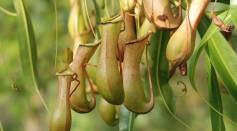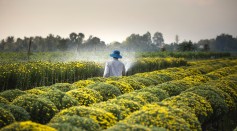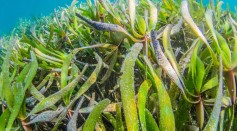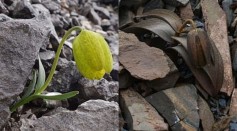plant

Pitcher Plant Nepenthes Gracilis Technique in Capturing Insects Using Rain May Optimize Geometric Structures in Biology

Asteroid Has Nutrients Making It Possible to Plant and Grow Crops Outside Planet Earth, New Research Says

Bolstering Plant Immunity Vs Climate Change Could Help Plants Fight Back Diseases

4,500-Year-Old Seagrass Is World's Largest Plant That Can Clone Itself to Reproduce, Researchers Claim
Cambodia Ministry Warns Against Picking Carnivorous Penis Plant Flowers for Blogs; Pitcher Plants Already Vulnerable to Extinction

Mammal, Bird and Plant Species Near Extinction: What Do They Have in Common?
Beware: Toxic Parsnip-Like Plant Washed Up in Cumbria Beaches Can Kill Humans and Pets
Rare 'Penis Plant' Blooms for the First Time in the Netherlands, The First in Europe After 20 Years
Saving Nevada Wildflower: Proposed Rule Issued to Protect Plant From Australian Company's Alleged Plan to Mine Lithium
Light-Emitting Plant: Scientists Develop ‘Glow in the Dark’ Greens to Benefit Humans

‘Goopy’ New Paste Can Ultimately Unlock Energy Potential of Clean Energy, Study Finds
Scientists Develop Rust-Disease Resistant Wheat

Plant Found In China Evolved To Become Less Visible to Humans
Making Natural Products in an Unnatural Way
Most Popular

How Technology Is Changing the Real Estate Industry?

AI Revolution in Medical Education: Transforming How Healthcare Professionals Learn

Zombie Star Set to Light Up Night Sky: Blaze Star Could Erupt Soon

Exploring Life Beyond Earth: Study Claims Other Planets Could Be Suitable for Alien Life






